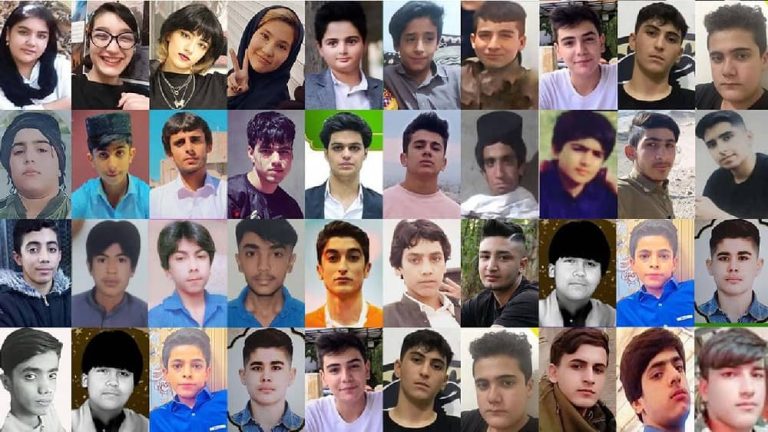Iran’s Revolution or a Crisis Stemmed from Generation Gap

Written by
Mahmoud Hakamian
Iran’s nationwide uprising is marking its fourth month. People from all walks of life demand radical change. While many consider the country’s Generation Z as the driving force behind the protests, an in-depth review suggests that the national demand for freedom and democracy goes beyond generations.
Undoubtedly, the admirable role of the Iranian youth and women in leading and continuing the protests, despite the regime’s severe crackdown, should not be underestimated. But portraying what many experts consider a revolution as the mere agonizing conflict between older and newer generations would not only be overlooking the older Iranian generations’ presence in demonstrations but also playing in the regime’s game.
Since the protests erupted in September, Iran’s clerical regime has tried several tactics to outflank the ever-growing nationwide wave of dissent. From calling protesters apostles or painting them as foreign agents to calling Iranian youths’ activities “sheer excitement” due to generation gaps.
“Our system has two pillars: The people and the supreme leader. Their connection is very important. In this sedition [regime’s derogatory term to describe the uprising], the enemy is targeting both pillars. They are targeting the forces, increasing popular indifference, and amplifying the authorities’ fear,” Hossein Taeb, the advisor to the regime’s Revolutionary Guards (IRGC) commander, said on December 8, according to Iran’s state TV.
“We are now witnessing a generation gap. How does this gap work? For instance, the youngest child questions his father’s role in the revolution or the [Iran-Iraq] war. The public hatred is the result of these increasing generation gaps,” he added.
Iranian youth dies after being tortured by security forces
Taeb’s remarks, despite his efforts to twist the truth by calling the regime “revolution” or “Islam,” consists of two important factors about the sociopolitical milieu in Iran:
He acknowledges that the people’s main target is the regime and its supreme leader, Ali Khamenei.
Taeb speaks of the generation gap and gives an example of a pro-regime family in which the offspring rejects their parents’ role in supporting the regime or participating in the devastating Iran-Iraq war, which Tehran has been trying to portray as a “sacred defense.”
He also acknowledges the rising trend of defection among state officials who worry about their future as the prospect of the regime’s downfall becomes clearer and closer.
Taeb is not the first official desperately trying to insist that the current revolution is nothing but the youth’s excited reaction to recent incidents, mainly due to the so-called generational gap. It is true that Iran’s vibrant society and youth reject the regime’s backward thinking and medieval rule. But this did not happen overnight, and neither is it limited to a certain generation.
Since the mullahs hijacked the revolution in 1979, Iranians, generation after generation, have been struggling for freedom. Religious fascism sent tens of thousands of brilliant youths to the gallows or used hundreds of thousands of them as cannon fodders as human masses to clear minefields during the war.
The values created in a society do not fade away. A bright example is the Ukrainians’ “resistance” against all odds, which has revived this value in Europe almost eight decades after the resistance movements fought the Nazis.
The bravery of those Iranians, such as the 30,000 political prisoners massacred in 1988 for refusing to bow to the regime, is indeed inherited by the Iranian youth who relentlessly continue their uprising.
Besides, the presence of an organized Resistance movement, the People’s Mojahedin Organization of Iran (PMO/MEK), which has preserved the value of resistance against tyranny at all costs, shouldn’t be overlooked. Let alone dozens of major protests that have shaken the nation since the 1990s, where the youth had taken to the streets in the thousands and cried for regime change but were brutally gunned down or landed in the dungeons.
These values, such as Resistance, and the common goal of establishing democracy have indeed unified Iranians from different generations and walks of life to demand regime change.
In this regard, Taeb, as well as other state officials, have tried to use another worn-out tactic of overstating the so-called “social divide.” It is worth noting that the clerical regime has tried vainly to paint protesters in the ethnic minorities areas as separationists. But people’s national unity, demonstrated in slogans such as “from Kurdistan to Tehran, my life for Iran,” has debunked the regime’s bogus claims.
Iran’s society is more united than ever. The so-called “gaps” and “rifts” Taeb and other officials are trying to exploit are merely an attempt to deflect the regime’s fear of a restive and unified society.
In June 2017, Khamenei said: “We have social faults inside the country. If they become active, then an earthquake will occur.”
Indeed, the quake happened, and it rattled the regime’s foundations. It will certainly continue until the mullahs’ downfall, no matter the time span or circumstances. The world should indeed embrace the change on the horizon and support the Iranian people’s aspiration for a democratic country based on the rule of law.
I commend the brave youth and women of Iran who challenge the clerical regime in the streets everyday #iranelection
— Maryam Rajavi (@Maryam_Rajavi) July 27, 2009

